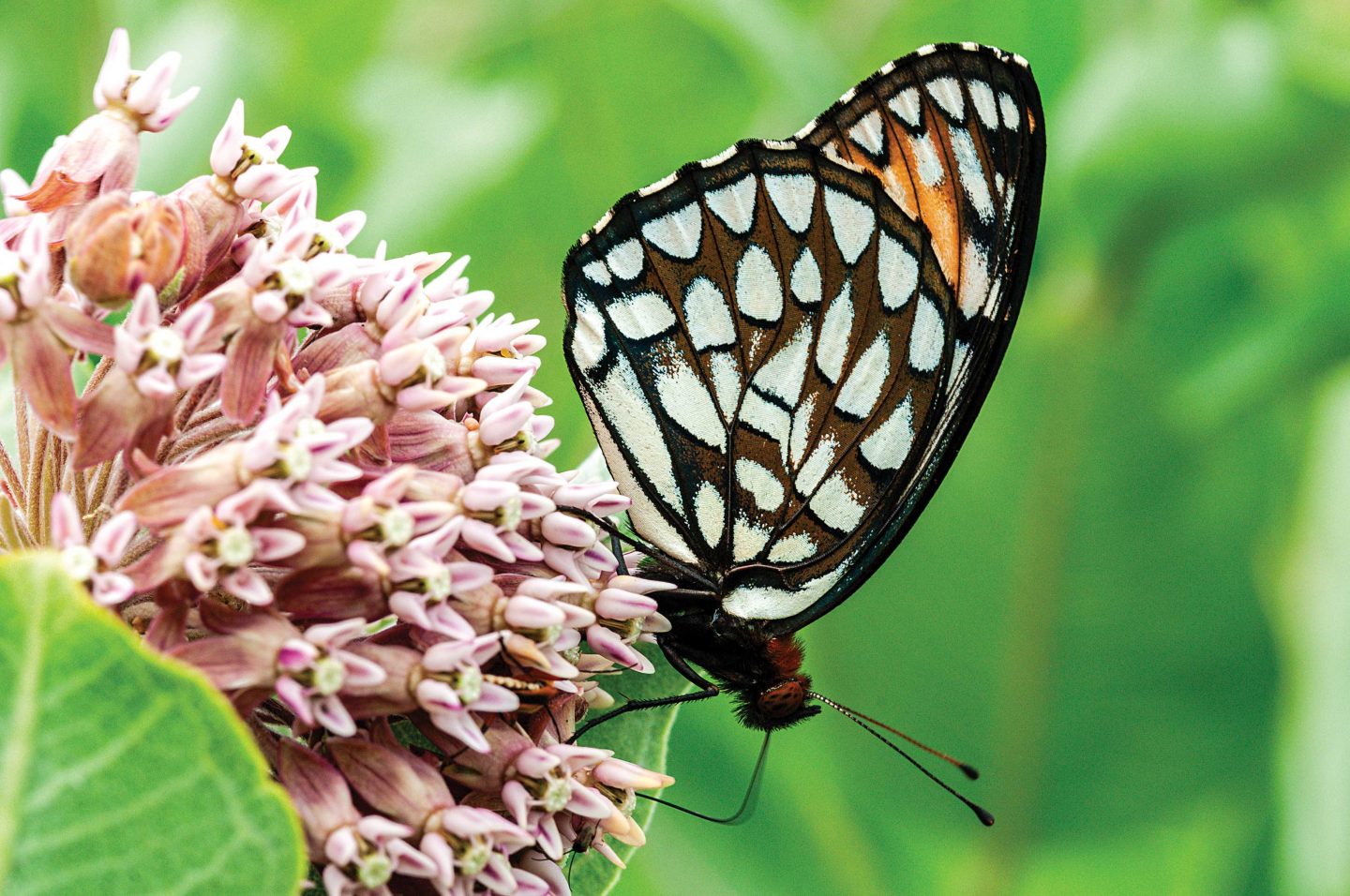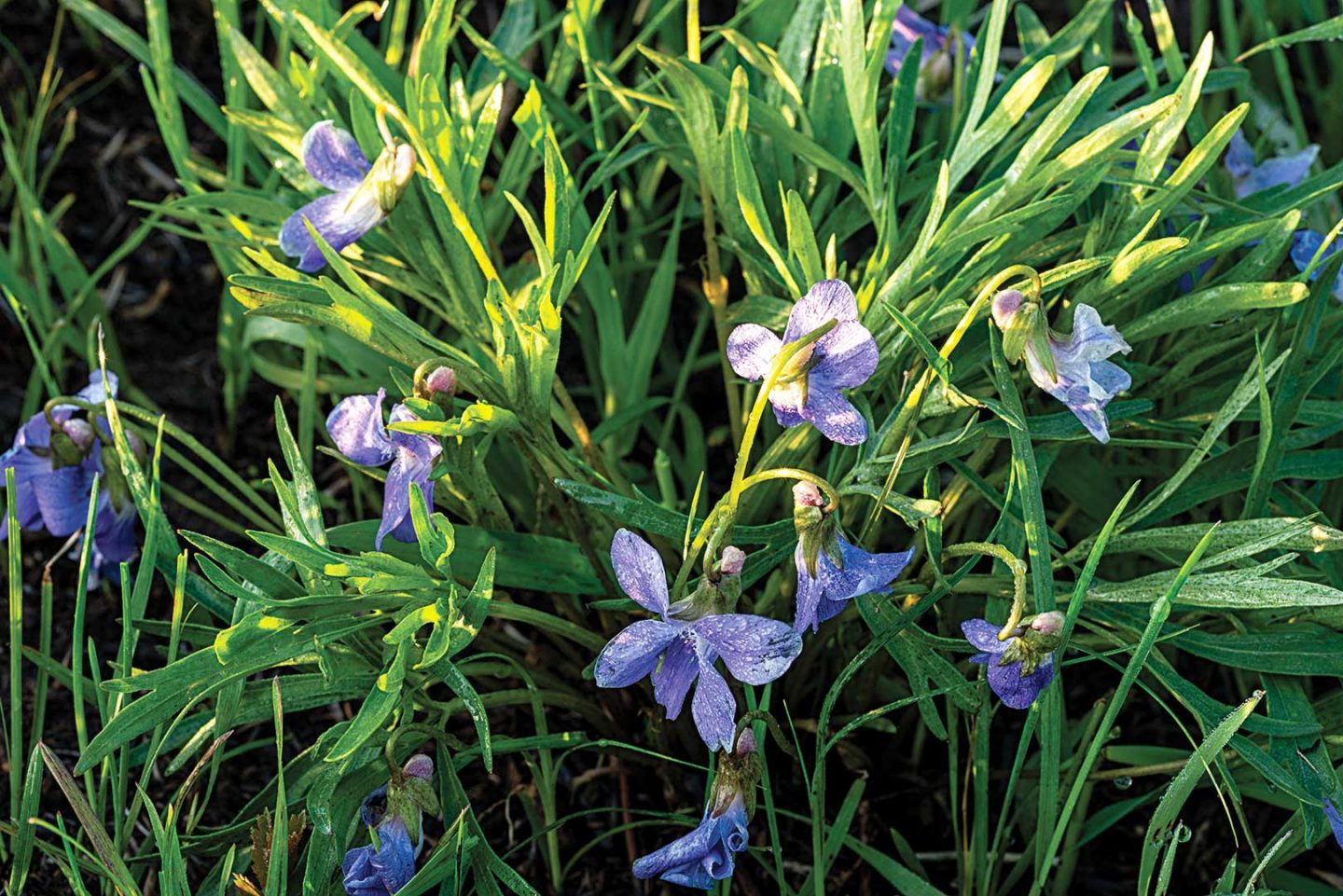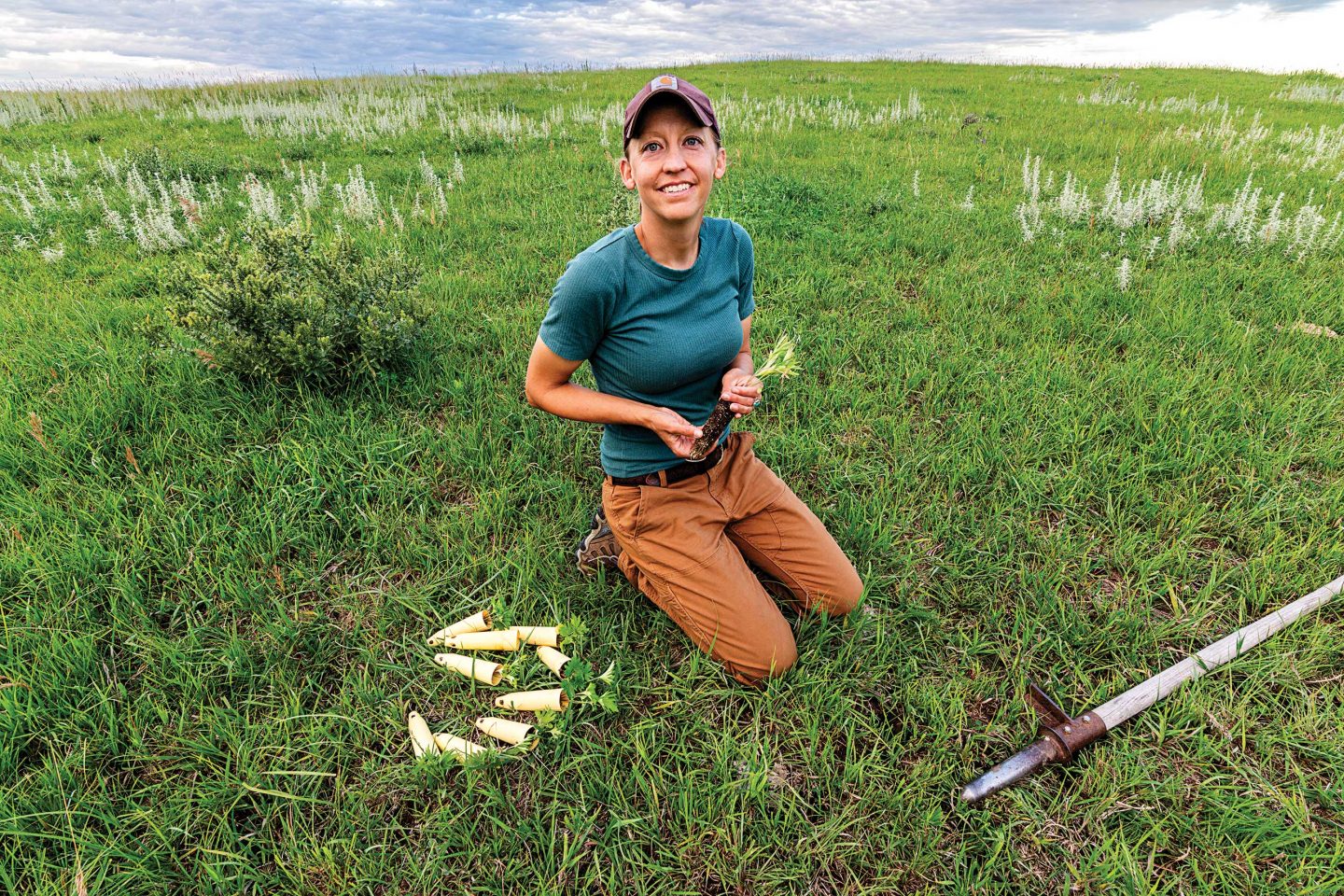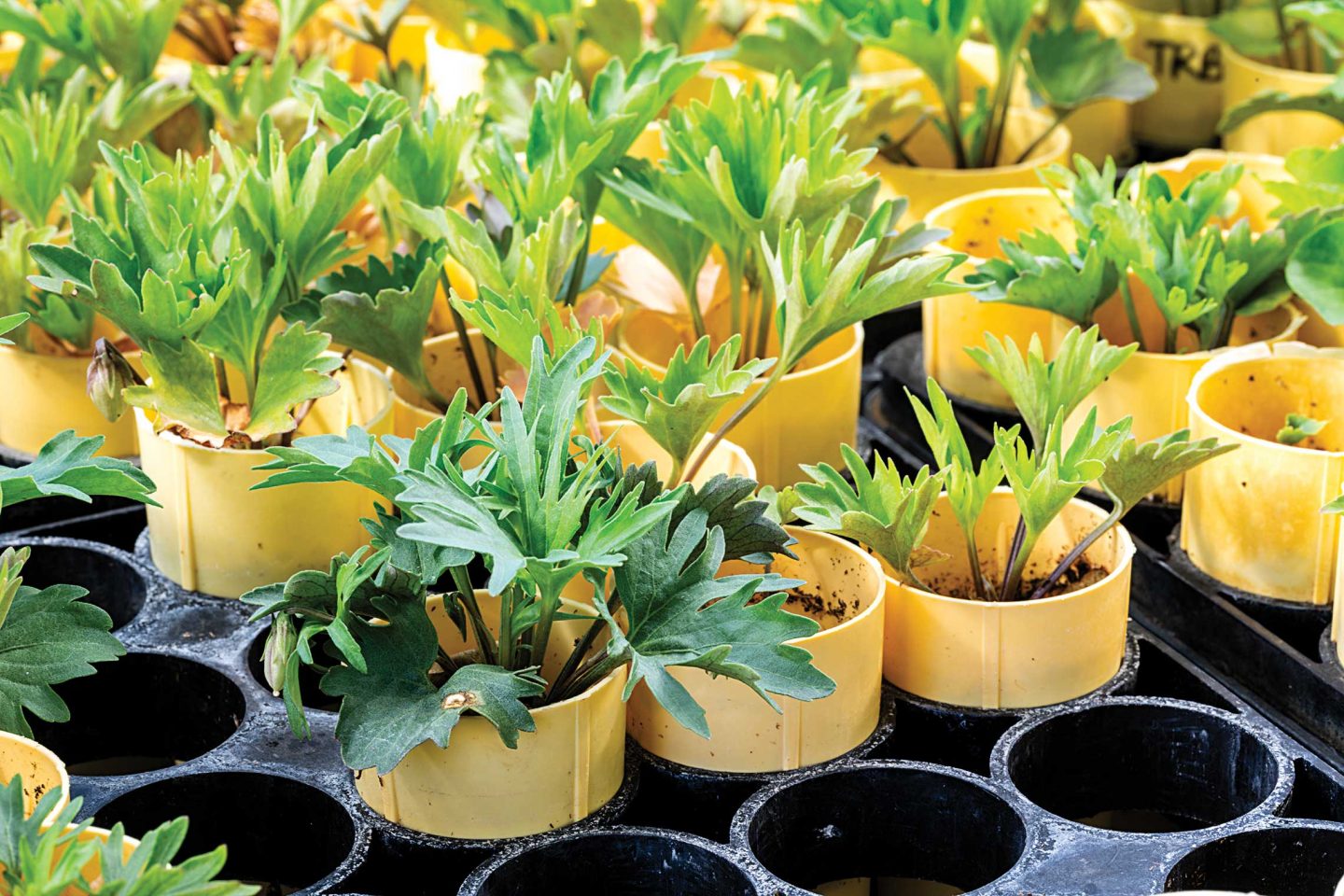
By Gerry Steinauer, Botanist
The regal fritillary is aptly named. A glimpse of this large butterfly, with its beautiful reddish-orange wings ornately spotted with white, black and blue, effortlessly sailing above the prairie, is indeed a regal sight.
Historically, the regal fritillary occupied grasslands throughout the northeastern and north-central United States. Unfortunately, east of Nebraska, regal populations have crashed, and the species has been extirpated from much of its former range. However, in the Great Plains, the butterfly has fared better, and this region is the species’ last stronghold.
In Nebraska, the regal fritillary still graces grasslands nearly statewide, from the tallgrass prairie remnants in the east to wet meadows in the Sandhills and dry, mixed-grass plains of the Panhandle. Its local abundance varies from common to rare, dependent on habitat abundance and quality. The loss of native grassland habitats is largely responsible for the butterfly’s range-wide decline. However, other factors have also played a role, including the fact that evolution has painted the insect into a corner of specialization.
Let me explain: Like many butterfly species, regal fritillary caterpillars have evolved to feed solely on a specific group of plants — in this case, violets. Unfortunately, in Nebraska and elsewhere throughout the species’ range, native violets have greatly declined in grasslands due to heavy grazing, herbicide use and other factors. As you can easily surmise, this is bad news for the regal fritillary, as its caterpillars cannot survive without food.

This is where Sarah Bailey, Conservation and Education Director for the Prairie Plains Resource Institute in Aurora, comes into play. For 14 years, she has been growing violets in a greenhouse and transplanting them into eastern Nebraska grasslands for the benefit of regal fritillaries. This is the story of the butterfly and Bailey’s violet-growing efforts to help them.
Life Cycle
Like all butterflies, the regal fritillary’s life history has four stages: egg, caterpillar, chrysalis and adult. Males emerge from the chrysalis in mid-June, while the females emerge one to two weeks later. The males patiently perch on plants, waiting for females to fly by, or actively fly about prairies searching for females to mate with. After mating, the no-longer-needed males soon die.
The eggs develop slowly within the female and are not laid until late summer or early fall. Females walk about the thick prairie vegetation laying over 2,000 eggs singly on dead and living vegetation, including violets if she happens upon them. The eggs hatch in three to four weeks, and without eating, the tiny hatchling caterpillars immediately crawl down into clumps of dried grass, where they enter a period of suspended development and overwinter.
The warmth of spring propels the caterpillars to emerge from hibernation and begin feeding on tender, young violet leaves. However, there is a catch: The caterpillars can only detect violets from about an inch away, and most never find their first meal. By laying 2,000 eggs, females ensure that a few lucky caterpillars will find violets and survive.
In Nebraska, the caterpillars are thought to feed mainly on prairie violet (Viola pedatifida), a fairly common species of higher-quality grasslands in northern and eastern Nebraska, but they also feed on a few other violet species. Individual caterpillars feast on several violet plants throughout their slow development; therefore, violets need to be present in sufficient densities to support them. When fully developed, caterpillars enter the chrysalis stage in late spring, and the life cycle begins again.
Violets to the Rescue
Sarah Bailey’s passion for regal fritillaries and violets began the summer after her freshman year at the University of Nebraska-Lincoln in 2006. During an excursion to a prairie near Lincoln to photograph wildflowers and insects, she encountered her first regal fritillary, became smitten and began researching the species’ natural history and dependence on violets.

She graduated in 2009 with a degree in biology and environmental studies. Serendipitously, soon after her graduation, Prairie Plains received a grant from the Nebraska Game and Parks Commission for regal fritillary conservation. The funds were used to build a greenhouse on their Gjerloff Prairie in Hamilton County to grow violets and other wildflowers, which are favored by regal fritillaries as nectar plants, for transplanting into grasslands. They needed someone to run the operation, and Bailey was the perfect fit.
Before explaining Bailey’s method of growing violets, it is important to understand why Prairie Plains and other conservation groups do not simply harvest and sow violet seeds into grasslands to enhance their populations. Primarily, it is because it is extremely difficult to find and collect sufficient quantities of the small and scattered violet seed pods in grasslands. Also, once ripe, the pods immediately burst open, ejecting the tiny seeds onto the soil and out of reach of the already frustrated collectors’ grasp.
Soon after being hired, Bailey began digging mature violets from prairies and transplanting them into large pots in the greenhouse. Her intent was to use the seeds produced by these violets to start new plants in grow tubes. The mature violets bloomed the following spring and formed seed pods, but there was a problem: The bursting pods scattered the seeds across the greenhouse floor before Bailey could harvest them. The next year, she innovated by placing window screens over the pots so that when the pods burst, the seeds bounced off the screens and onto the bare soil in the pots.
These seeds germinated en masse in the pots late the following winter, and Bailey then meticulously transplanted each tiny seedling into its own grow tube where they matured over the summer. She transplants the young violets into grasslands during the coolness of late September, allowing the plants to avoid the stress of summer’s heat, but giving their roots time to take hold in the soil before entering winter dormancy.
Bailey grows and transplants between 1,500 and 2,000 violets annually. The majority are prairie violets, but she also grows other violets regal fritillary caterpillars are known to eat, including Missouri violet (V. missouriensis), which is native to eastern Nebraska wet meadows; lance-leaved violet (V. lanceolata), which is native to northeastern Sandhills wet meadows; and downy blue violet (V. sororia), which is common in grasslands and woodlands throughout the state. Her violets have been planted into prairie restorations and existing prairies throughout eastern Nebraska.

Measuring Success
In September 2018, 300 of Bailey’s prairie violets were planted into two go-back prairies, long-abandoned farm fields now mostly colonized by native and non-native grasses, in Pawnee County. They were planted in marked rows with plants spaced a yard apart to allow follow-up monitoring. Luckily, a week of good rain followed.
The following spring, the plants were counted, and beyond expectation, 93 percent survived through their first winter. Bailey said that at most transplant sites, 40 to 60 percent of violets survive their first winter. Better yet, at the go-back prairies and other transplant sites, new violet plants are now becoming established from the originals via seed or rhizomes, shallow underground stems with buds.
and wild violets need energy and require full exposure to the sun in spring for leaf growth, flowering and seed set. If shaded by tall grass or thick thatch during this critical time, they will not reproduce and may not even survive. The go-back prairies are managed with grazing, which limits both grass growth and thatch. Well-timed haying and prescribed fire can also achieve the same result. Proper grassland management at transplant sites is crucial to sustain violets and a variety of other wildflowers adult regal fritillaries need for food.
Bailey admits that the return on investment of her violet transplants for regal fritillaries is still unknown, and true success will only be realized when the transplant site’s violet population can sustain the butterfly’s caterpillars. Unfortunately, the caterpillars are extremely hard to find; after years of searching, Bailey has encountered only one, complicating the measuring of success. While the long-term effects of her work are still being evaluated, she will continue to grow violets and learn. It’s the passion and knowledge of people like Bailey that drives conservation.
